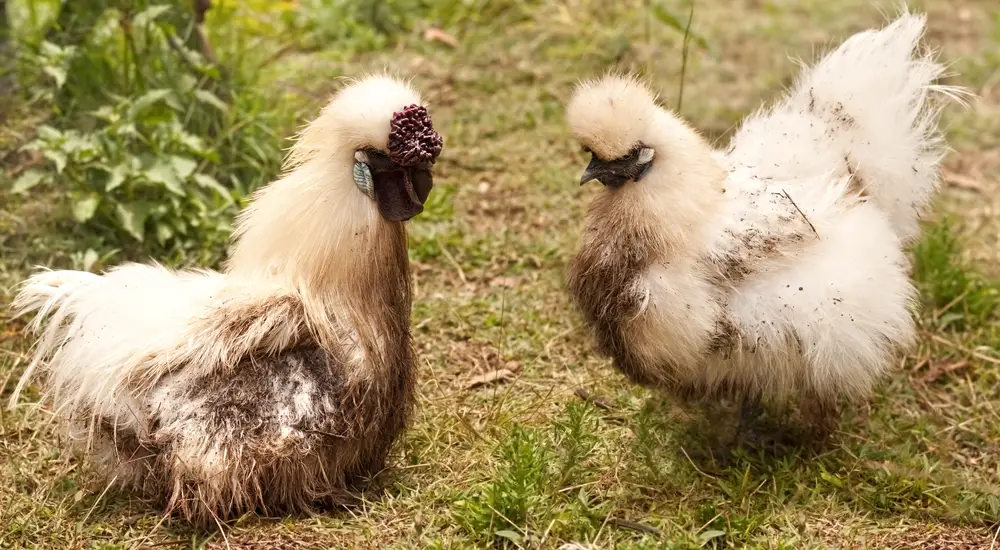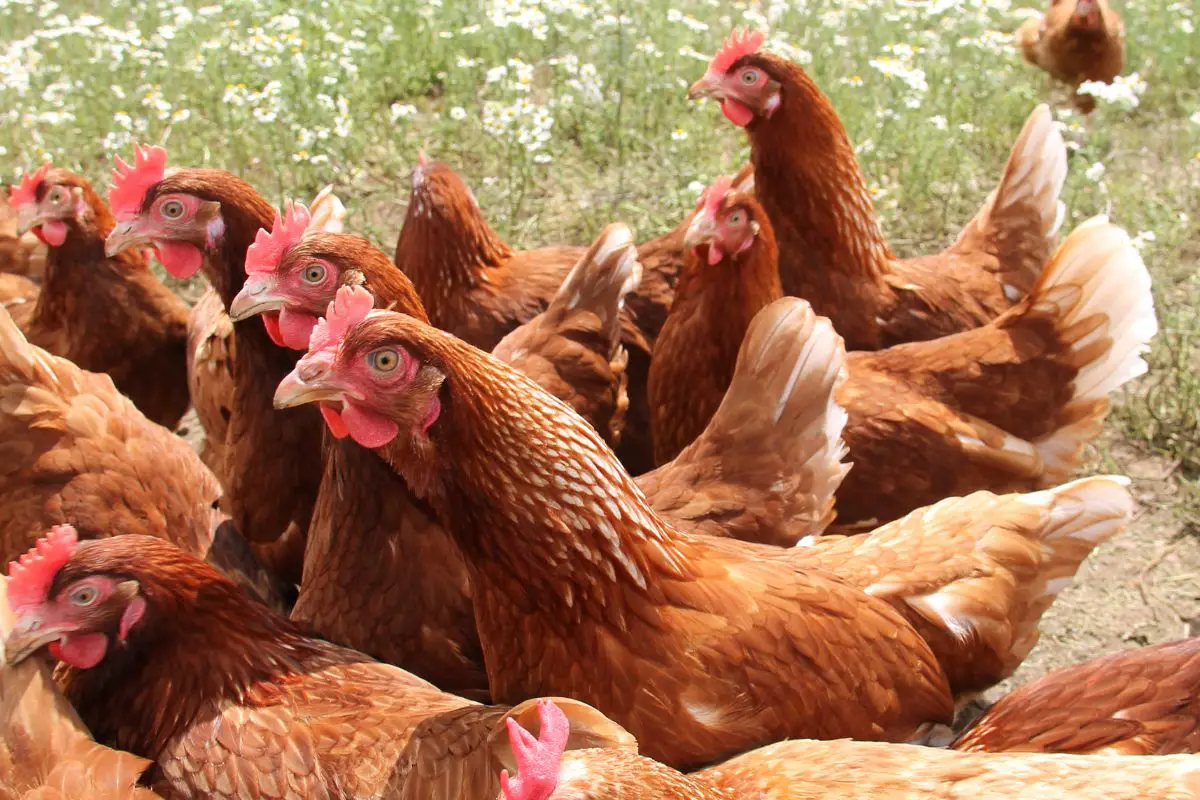Flystrike in chickens is a parasitic condition where flies lay eggs in the dead skin or cavities of dirty or heavily-feathered chickens. This can be largely prevented by keeping chickens and their coops cleaned regularly.
As is true of all animal species, backyard chickens are commonly affected by a wide variety of illnesses and health conditions. It’s vital for chicken keepers to be aware of these potential health issues in order to ensure the safety of their flock.
In this article, we will be focusing on one of the more deadly conditions your chickens might face known as flystrike. While flystrike is certainly a scary thing to have happen to your chicken, we will be covering ways to both treat and prevent this condition.
Table of Contents
What is Flystrike?
Flystrike, otherwise known as myiasis or blowfly strike, is a parasitic condition where flies lay their eggs in the dead skin or body cavities of another animal. Once the eggs hatch, the newborn larvae will begin eating the surrounding tissue where they were born. If untreated, the maggots can eat deep into the chicken’s flesh and organs, potentially causing infection or shock which can lead to death.
As gruesome as this sounds, it’s a fairly common health issue that is found in animals around the world. Flystrike is most commonly found in chickens that live in warm weather tropical and subtropical climates, but it can realistically occur in any ecosystem that has flies.
Botflies, screw flies, blowflies, and horseflies are the types of flies that typically cause flystrike.
Why do Chickens get Flystrike?
Flies are drawn to chickens that are dirty and have feces-coated feathers, as they are usually drawn to warm and moist areas that exhibit decay. So, if a chicken isn’t properly cleaned or is dealing with another health condition that is causing it to be lethargic it can be an easy target for fly infestation.

One of the most common areas on the chicken’s body that is afflicted with flystrike is the vent, as it is normal for chicken poop to collect around that part of the body. Chickens that are particularly fluffy or have thicker feathering are usually prone to have this issue, as their droppings can easily collect in the feathers.
Sometimes, a wounded chicken will attract flies. An untreated or open wound’s exposed tissue will be a very attractive spot to lay eggs, as it will also be both warm and moist. Fly eggs will begin hatching within 8-12 hours, so it’s important to act fast if you think your chicken might be showing symptoms of flystrike.
Flystrike Symptoms
Once a fly lays their eggs on the chicken, it can take several days for the bird to show any signs that they might be sick. However, there are a variety of symptoms to look out for when it comes to detecting flystrike.
Lethargy – If you notice that your chicken has become overly lazy or doesn’t seem to have much energy, this could be a leading sign that they are unwell. Keeping tabs on your chicken’s behavior is a good way to better understand its overall wellbeing.
Dirty Feathers – Normally, chickens do a good job of keeping themselves clean by dust bathing, but it’s a good idea to inspect your chickens often to make sure they have good levels of hygiene. If a chicken has droppings built up around their vent, this can cause the skin around that area to start to break down. A dirty vent is one of the biggest targets for flystrike, so it’s important to always make sure that area is clean.
Irregular Preening – If a chicken is constantly grooming itself in a particular area, that could indicate that something is wrong with that part of the body. Chickens are usually great at preening and keeping themselves clean, so if you start to notice that they’re focusing on one spot of their body more often than usual, you might have a case of flystrike on your hands.
Maggots – The most obvious symptom of flystrike is the presence of maggots on your chicken. Whether they’re in an open wound or near the chicken’s vent, seeing small, white larvae crawling around your chicken means that you need to start treating your bird for flystrike.
How to Treat Flystrike
Fortunately, flystrike is treatable and there are several steps you can take to help your chicken recover. Of course, if treatment at home doesn’t prove to be working, it is always best to contact your local veterinarian for professional assistance.
To treat Flystrike at home:
- Remove affected chicken from the rest of the flock for safety, and immediately wash off the area that is infested with maggots.
- When cleaning the chicken, use warm water and soap that won’t hurt the bird, Dawn dish soap is surprisingly effective and shouldn’t hurt the chicken. As you’re washing off the affected area, begin physically removing the maggots with a pair of tweezers.
- After the wound has been properly flushed out, use a permethrin spray such as Vetericyn which will further clean out the wound of microorganisms. If the wound from the flystrike is significantly deep, the use of a syringe might be required to get the antimicrobial liquid further into the area.
- You then want to thoroughly dry the area and inspect the area to make sure all visible maggots have been removed.
- Finally, once the area seems properly cared for, spray more Vetericyn directly on the wound to help prevent infection.
- Keep the affected chicken isolated until fully healed, and repeat steps 1-5 two or three times every day until the wound is healed.
Again, if the wound doesn’t appear to be healing after attempting to treat it yourself, your chicken should see a veterinarian for professional treatment if possible. Flystrike has the potential to lead to severe infections, so it is wise to always take the utmost care when treating this condition.
Your vet might prescribe antibiotics to help your chicken if the wound does get infected. Once fully healed, you can then reintroduce your chicken back to the rest of your coop.
Flystrike Prevention
Now that you’re familiar with flystrike and how to treat it, let’s now consider how to best prevent it from happening.

If you are proactive in your approach, you will reduce the chances that your flock is affected by flystrike and are well equipped to deal with it if it does occur.
Pay Attention to Your Flock
Regularly inspecting your birds up close is the best way to notice if something is wrong. Taking the time to physically look over your chickens and feel through their feathers will allow you to easily tell if there’s an infected area.
Keep Your Chickens’ Vents Clean
Even though chickens are usually good about keeping themselves clean, it’s important to make sure vulnerable parts are clean. Giving chickens who are prone to having dirty vents is usually quick and easy, and will ensure that flystrike won’t occur. If the feathers around the vent are too thick and are constantly dirty, it’s okay to trim them short with a pair of scissors to make sure the area will remain clean.
Fly Population Control
The natural solution to flystrike is reducing the number of flies that are in the area of your chicken coop. This is easily done by keeping your coop clean of feces, so they aren’t drawn in, and also by keeping the coop nice and dry with the addition of sand or ground cover as a way to better prevent moisture and odor.
Plants are also a surprisingly effective way of getting rid of flies. While venus fly traps aren’t going to be the most efficient way of deterring large quantities, planting herbs such as basil, mint and lavender might repel flies.
Closing Thoughts
Flystrike is a serious condition that can lead to chickens developing serious health issues. However, by taking the necessary actions to prevent and treat it, you can be prepared to help your flock if they become affected by flystrike.

